How to disable the SEO analysis?
Readability tab, please see this article.How do I disable the SEO analysis entirely?
The SEO analysis reviews the content of your post and provides you with real-time improvement tips. While we definitely recommend using the analysis, you can disable the SEO analysis site-wide or per user. This feature is enabled by default.
- Log in to your WordPress website.
When you’re logged in, you will be in your ‘Dashboard’.
- Click on ‘Yoast SEO’.
On the left-hand side, you will see a menu. In that menu, click on ‘Yoast SEO’.
- Click on ‘Settings’.
The ‘Yoast SEO’ settings will expand providing you with additional options. Click on ‘Settings’.
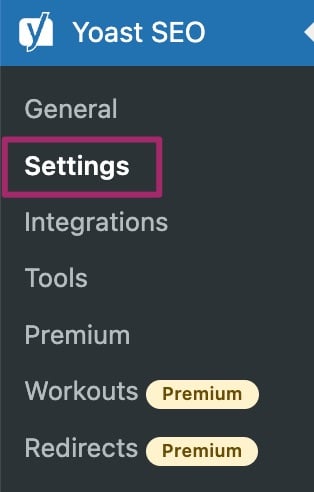
- Click on ‘General’ and then ‘Site features’.
On the left, you will see the Settings menu. Click the menu item ‘General’ and then go to ‘Site features’.
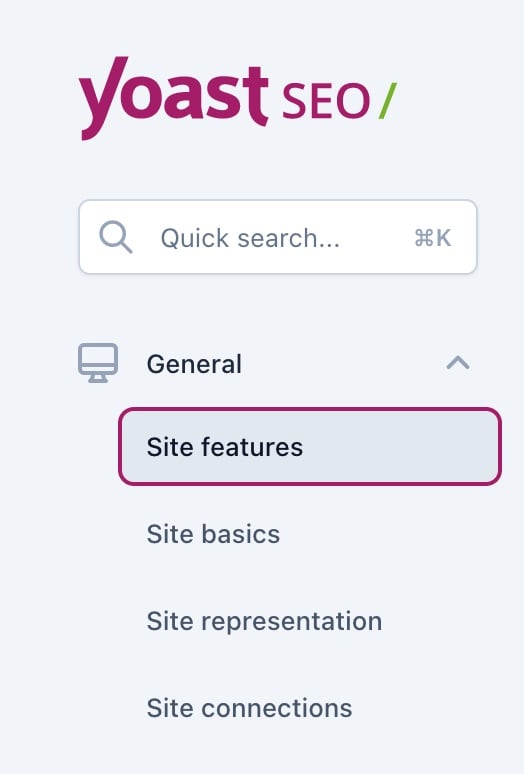
- Click the ‘SEO analysis’ switch.
To enable/disable the feature, click the switch of the SEO analysis feature. If you see a checkmark, the feature is enabled. If you see an X, the feature is disabled.
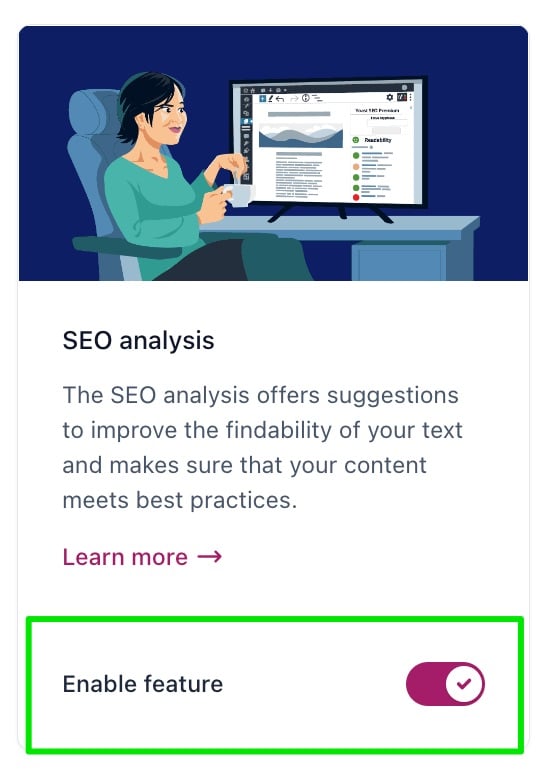
- Click ‘Save changes’.
How do I disable the SEO analysis for a specific content type?
You can enable or disable the SEO analysis for posts, pages, categories, tags, media pages, products, and custom post types. This is what you need to do.
- Click on the ‘Yoast SEO’ menu item.
- Click on ‘Settings’.
- In the Settings menu, you need to go to the post type of your choice. For example, click ‘Content types’ and then ‘Posts’ or ‘Pages’. Or, go to ‘Categories & tags’ and then click ‘Categories’ or ‘Tags’. Or, click ‘Advanced’ and then ‘Media pages’.
- Scroll down to the ‘Additional settings’.
- To enable/disable the SEO analysis for this specific post type, click the toggle. If you see a checkmark, the feature is enabled. If you see an X, the feature is disabled.

How do I disable the SEO analysis for individual users?
- Log in to your WordPress website.
When you’re logged in, you will be in your ‘Dashboard’. - Click on ‘Users’.
On the left-hand side, you will see a menu. In that menu, click on ‘Users’. - Click on ‘Profile’ or ‘Edit’ for other users.
The ‘Users’ settings will expand providing you with additional options. Click on ‘Profile’ to disable the SEO analysis for yourself or click ‘All Users’ and then Edit’ to disable it for another user.
- Tick the ‘Disable SEO analysis’ checkbox.
Scroll down to the Yoast SEO settings. To disable the feature, check the box next to ‘Disable SEO analysis’.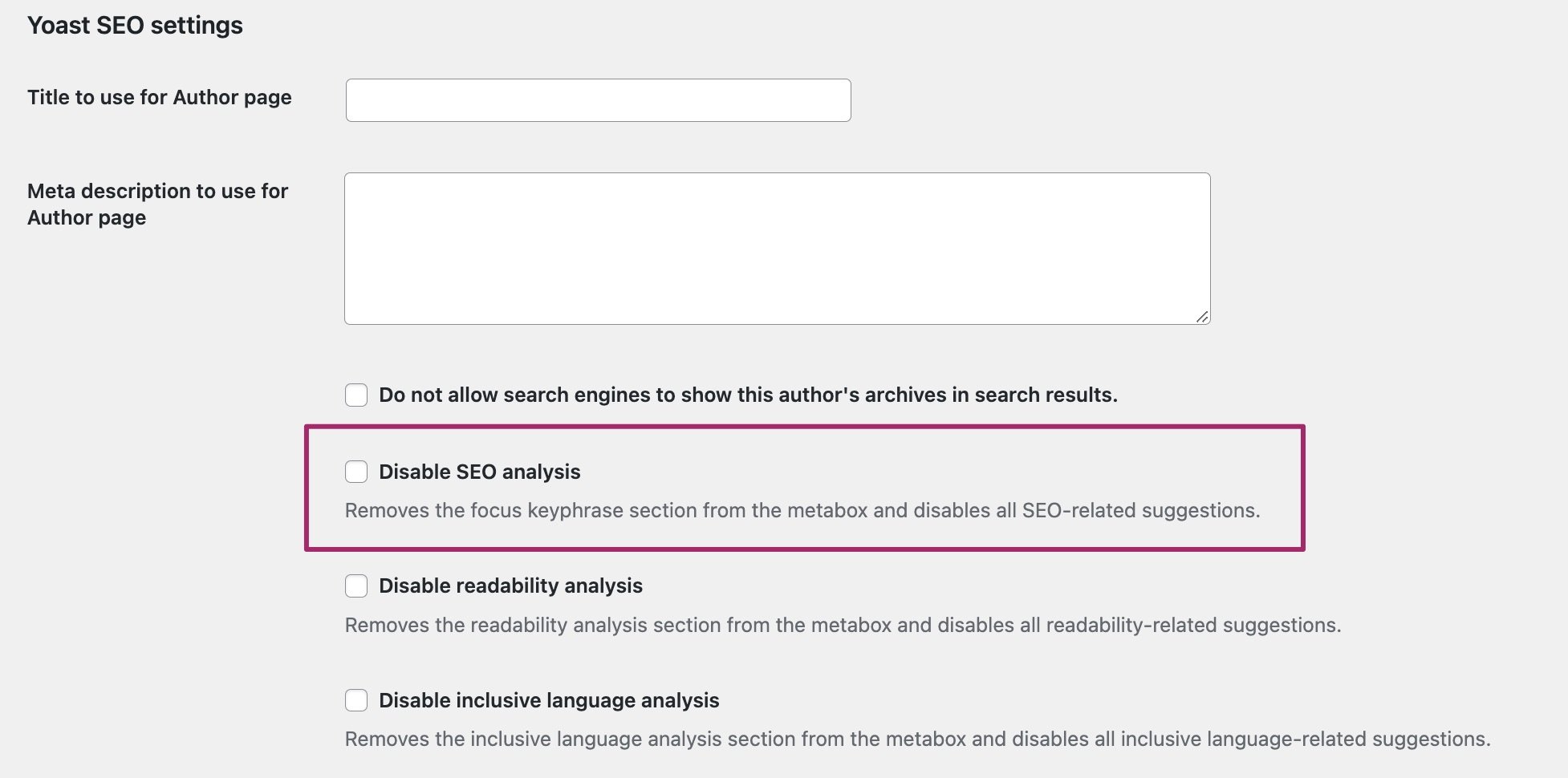
- Click ‘Update Profile’.
How do I disable the SEO analysis for individual pages?
Block editor
- Go to the post or page.
- Click the three vertical dots in the upper right corner and then click ‘Preferences’ in the menu.
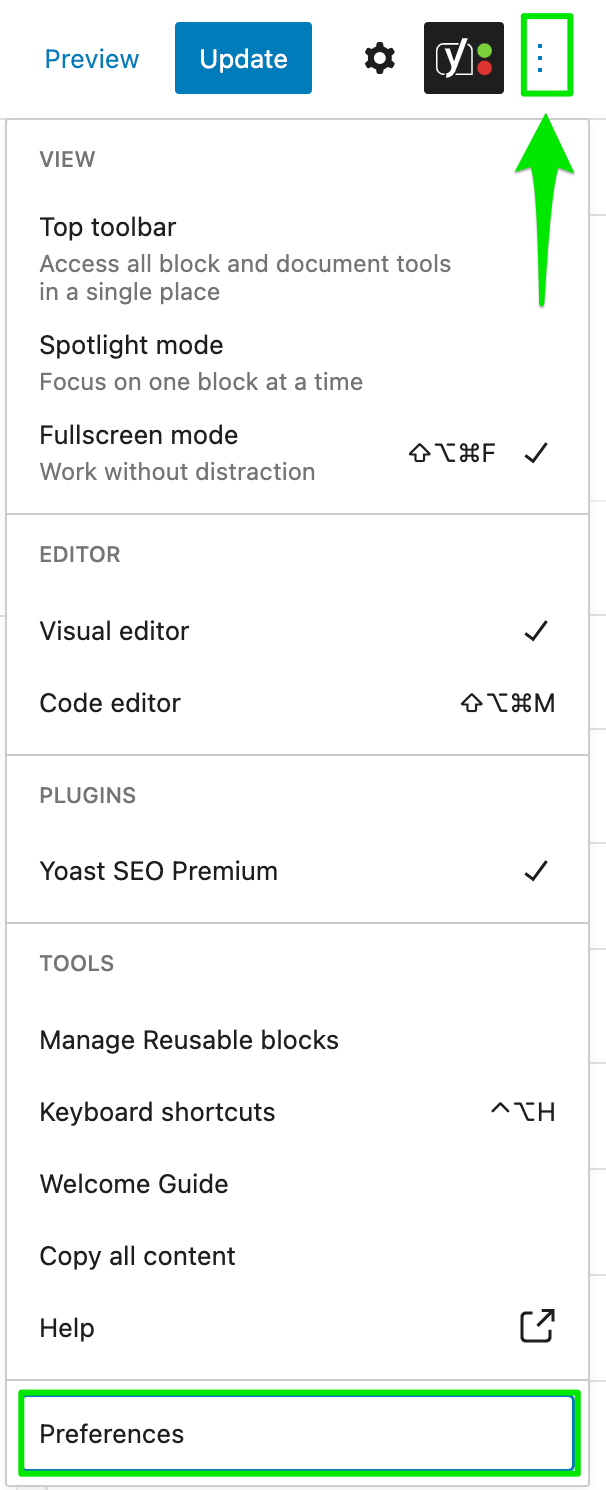
3. Click the ‘Panels’ tab to see the toggles for the additional areas. Click the toggle to enable/disable Yoast SEO (Premium). This will remove the Yoast SEO sidebar (including the SEO analysis) from the individual post/page.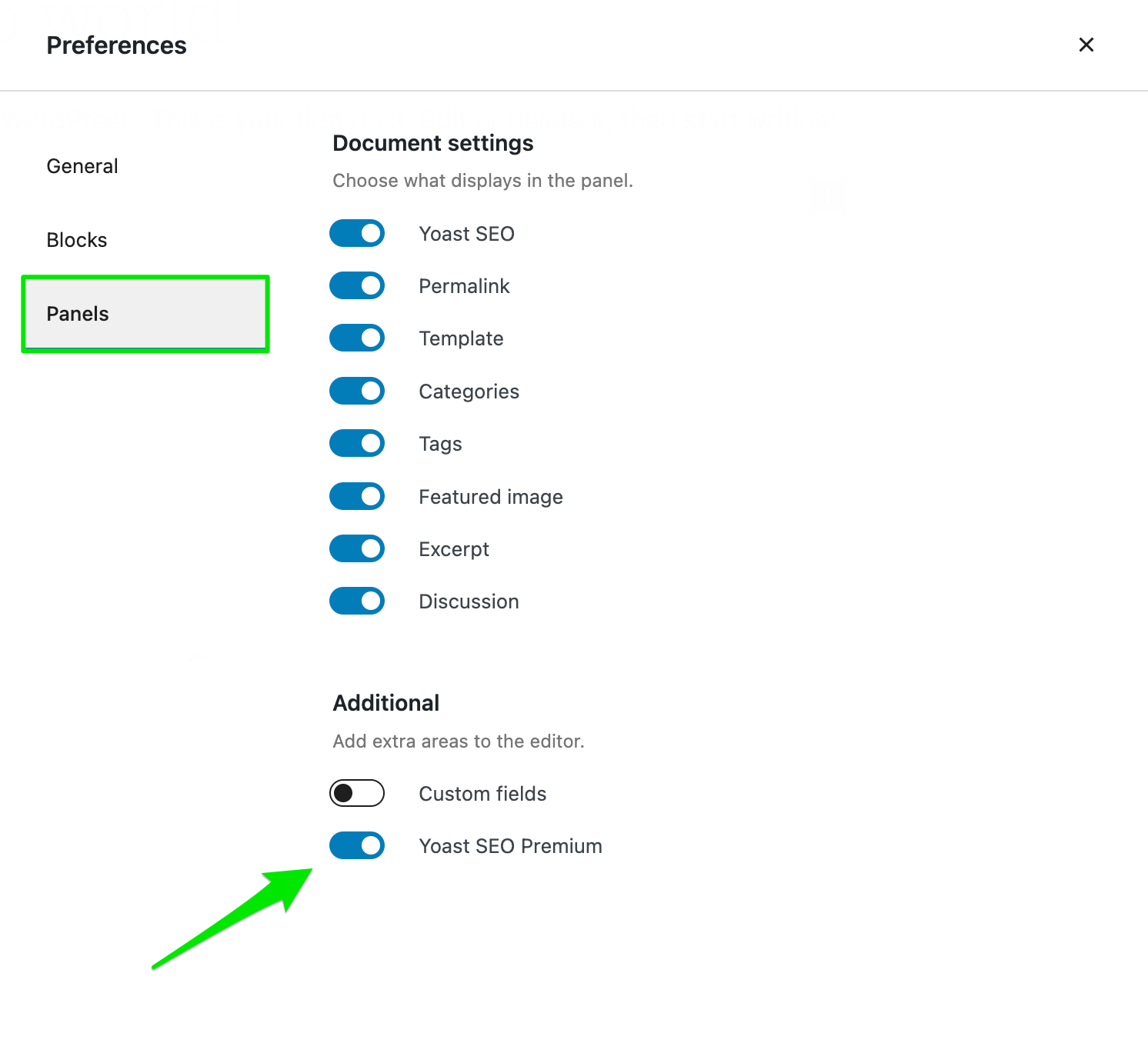
Classic editor
- Go to the post or page.
- Click ‘Screen Options’ in the upper right corner.

3. Untick the Yoast SEO (Premium) box. This will remove the Yoast SEO meta box (including the SEO analysis) from the individual post/page.


